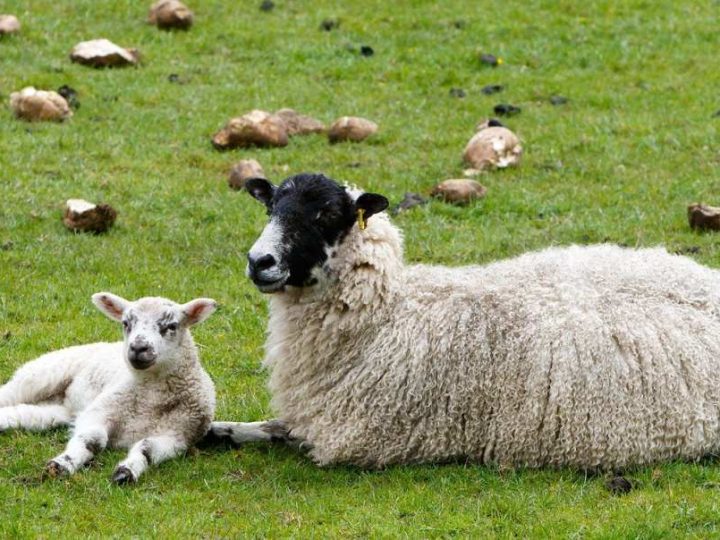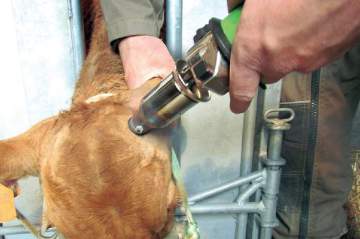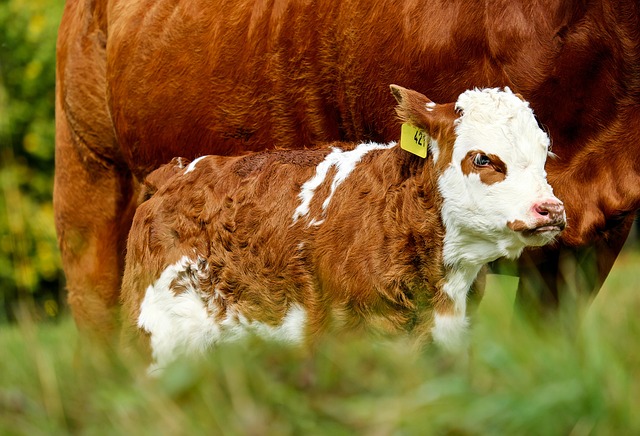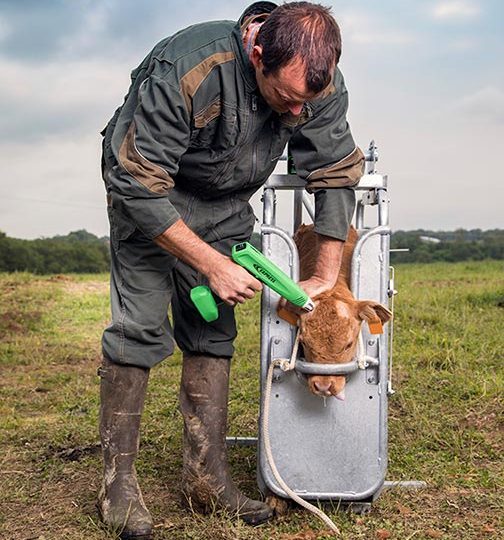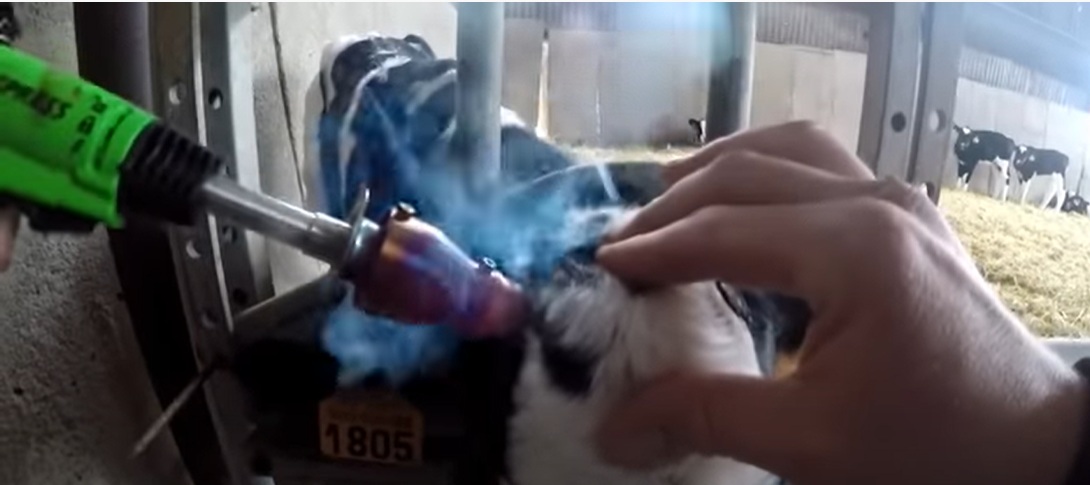
Dehorning is a crucial stage in the life of a young calf. It serves to protect the animals, as well as breeders. In order to make the operation as painless as possible, de-horning must be carried out at the appropriate age and according to a precise protocol.
Why are calves dehorned?
Cattle with horns can fight each other and injure themselves. When they are in the barn, the horns are dangerous because of proximity , but also since cattle can stick their head in the feed trough of the feed fence, running the risk of getting stuck. Hornless cattle are also easier to transport.
Calf dehorning also helps to protect the farmer himself.
What age should you dehorn calves?
Rather than dehorning calves, it is better to talk about disbudding, which means that the horn is not yet formed and is not connected to the skull. The bud is floating under the skin and can be destroyed in a few seconds by cauterisation, using a thermal dehorner (electric or gas).
Chemical dehorning is possible, but it is painful and more traumatic for the animal, which will feel a throbbing and long-lasting discomfort. It is also likely to spread the chemical paste on its mother while suckling and on other cattle at the slightest touch.
The ideal age for dehorning calves is between 15 days and two months. It is during this period that it is the least painful and therefore the least traumatic. The calves will not experience bad memories as the operation is of very short duration.
On the other hand, as the calf has not experienced life with horns, it will in no way be hindered during adulthood.
Preparation for dehorning calves
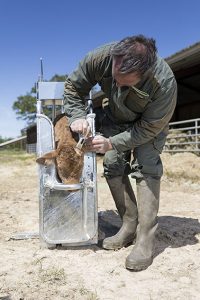
Shearing, a preliminary step to dehorning
Two precautions are essential before proceeding with the dehorning of calves: shearing, then anaesthesia.
Shearing, with the help of a small shearer, helps you to clear the area, for several reasons:
- to work with greater visibility;
- to locate the bud more easily by touching the skull;
- to make the area look cleaner;
- you don’t end up with a large mass of hairs that could burn out with a thermal peeler.
Anaesthesia is essential, as you will burn the surface of the skin to stop the growth of the bud, before it becomes a horn. You can get an anaesthetic, which is injected with a very fine needle through a subcutaneous injection, from your vet.
Wait for the prescribed time for the anaesthetic to take effect. Don’t forget to anaesthetize both sides, as you will be treating the two buds, one after the other.
The calf de-horning process
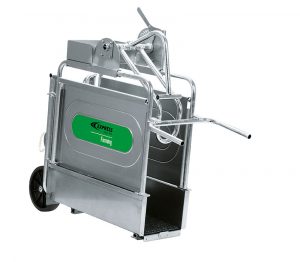
A cage to contain the animal
The last step before dehorning calves is to stabilise the animal. Ideally, the animal should be kept in a restraint cage for cattle. This limits its movements without the risk of injury. If the calf is well secured, you will work precisely and 5 seconds are enough for the thermal dehorner to come to grips with the bud.
Switch on your dehorner and wait until it is hot enough to reduce the length of the intervention.
Monitoring calf dehorning
As soon as you have finished, you should disinfect the bud area. It is advisable to also use an analgesic so that the calf does not feel any pain once the anaesthetic has stopped working.


